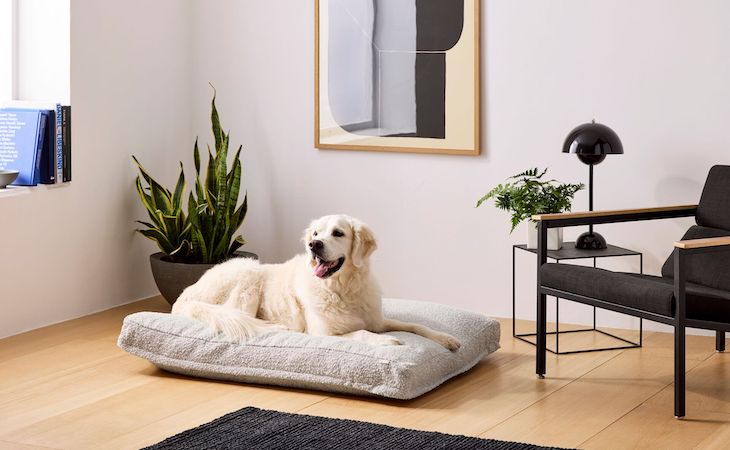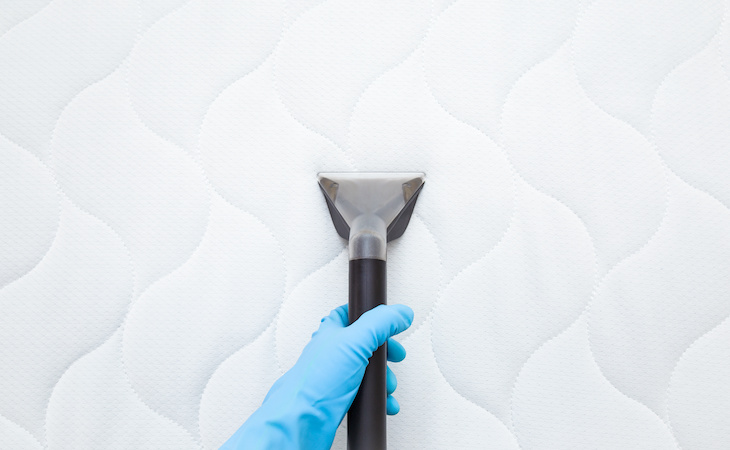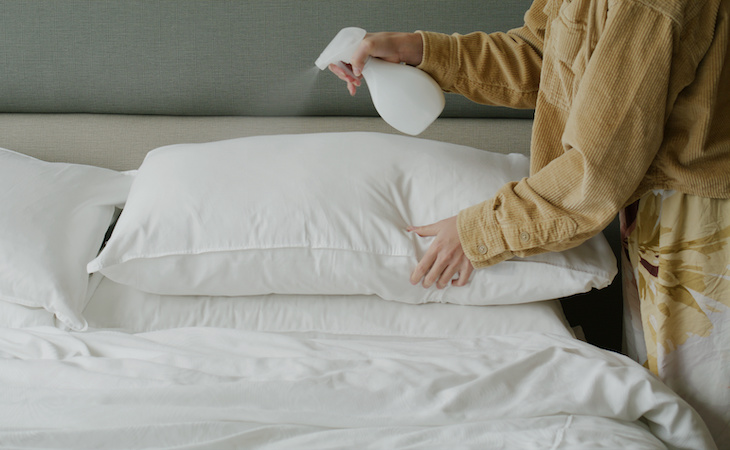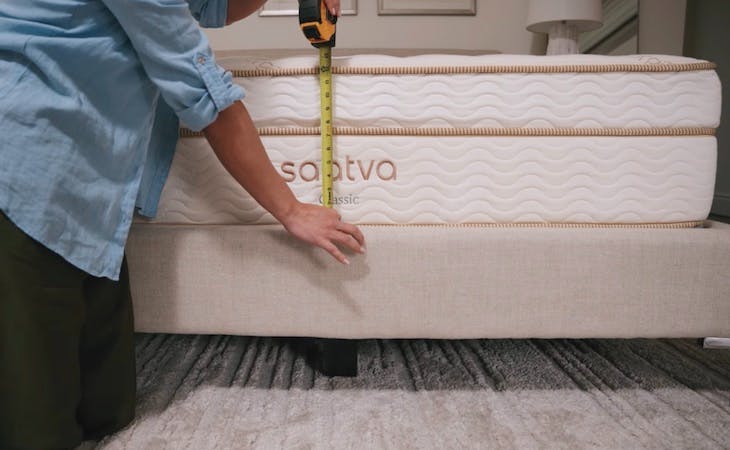Any dog owner knows that dogs are pure love and joy—but they can also be a lot of mess. Regardless of what kind of messy activities Rocky likes to get into, it’s essential to clean his bed regularly to keep it free from dirt and germs.
Read on to find out how to clean a dog bed (and how often you should do it!) so your pup’s bed stays in as good shape as possible for as long as possible.
How often to clean a dog bed
So now that the idea that your dog’s bed needs regular cleaning is hopefully planted in your mind, the question is how often should you do it. The short answer is, it depends.
The long answer is, it depends on a lot of factors such as what kind of dog you have, how much your dog sheds, how much time your dog spends outside, and whether your dog is the kind that likes to roll in cow poop or just plain old mud.
Of course, another factor is if someone in your house has a pet allergy. In that case, you’d definitely want to wash your dog’s bed more frequently.
On average, you should aim to clean your dog’s bed every couple of weeks—more or less often depending on the factors mentioned above.
How to clean a dog bed
The way you clean a dog bed depends on the kind of dog bed you have. There are two main types: dog beds with removable covers and dog beds without removable covers. These two have to be treated differently.
Dog beds with removable covers
If the dog bed has a removable cover, it can likely be machine-washed—but you should always check the manufacturer’s instructions.
First, thoroughly vacuum the bed or shake it outside to remove excess debris and hair. After that, simply throw the cover into the washing machine and wash it on a normal cycle (or according to the manufacturer’s instructions).
It’s best to use an unscented detergent suitable for people with sensitive skin as a regular detergent might cause your pet to have irritated skin or another allergic reaction. Don’t use any fabric softeners, and ideally, run your dog bed through an extra rinse cycle to help get rid of any detergent residue.
For best results, don’t put the dog bed cover in the dryer as this might cause it to shrink. Air dry it instead.
Dog beds without removable covers
How do you clean a dog bed without a removable cover? Well, for one, this type of dog bed can likely only be hand-washed.
Start by vacuuming the bed thoroughly or shaking it outside. Then, fill a bath or another large basin with enough warm water to completely submerge the dog bed. Add a nontoxic detergent (you can also add a cup of vinegar) and soak the bed in the solution for 10-15 minutes. You can either simply leave it there or help the cleaning process by squeezing and kneading the bed in the water a few times.
If needed, use an old toothbrush and scrub the bed with baking soda to help remove odors and clean in hard-to-reach corners. After that, rinse it thoroughly and lay it flat outside to air dry.
How to clean a dog bed with pee and other stains
What if your dog bed has pee stains or other stains and the instructions above aren’t enough to get it clean again? Fear not. We’ve got you covered.
Urine
If the urine stain is fresh, first cover it entirely with baking soda and leave it for five minutes to soak up all the liquid.
If it’s dry, make a solution of baking soda, two cups of vinegar, and water. Combine it all in a spray bottle and spray over the stain. Let it sit for 10 minutes.
Alternatively, you can use an enzyme cleaner to get rid of the stain (simply follow the instructions on the bottle). If you go for an enzyme cleaner, don’t use vinegar as it can negate the effect of the cleaner.
After spraying, blot the stain with a cloth. Repeat the process if necessary.
Poop
After disposing of the waste, make a mixture of 1:1 cold water and distilled white vinegar and, using a cloth, apply it to the affected area. If needed, scrub it with a brush. Repeat if necessary until the stain has disappeared and the liquid is absorbed.
After that, sprinkle some baking soda to help get rid of the odor and let it sit. Vacuum when dry.
Blood
For blood stains, it’s important to use cold water as hot or warm water will set the stain.
If the stain is still wet, soak it immediately in cold water. If it’s already dry, then first blot the stain with a wet cloth to remove as much blood as you can.
After that, mix baking soda, white vinegar, and cold water and let sit for 30 minutes. Here too you can use an enzyme cleaner or hydrogen peroxide instead.
Then blot the area out with a cloth. Repeat as necessary.
Dirt/mud
For stains that are from dirt or mud rather than bodily fluids, a pet-friendly detergent should do the job. Using a cloth or a brush, apply the detergent onto the stain in circular motions. After that, wash the bed as you normally would.
How to keep your dog bed clean in between washes
The best strategy is, of course, prevention. So, while it’s important to wash your dog’s bed every two weeks or so, there are also easy steps you can take to keep it clean in between washes.
First, wash your furry friend’s paws every time they come in from a walk. Second, make sure to vacuum your dog bed regularly to help prevent the accumulation of debris. Finally, spot-treat it as soon as you see a stain using a pet-safe stain remover.
FAQs
Is it OK to wash a dog bed in a washing machine?
For dog beds with removable covers, the cover can almost certainly be washed in the washing machine. But for those without removable covers, the bed almost certainly needs to be hand washed. In both cases, it’s best to check the manufacturer’s instructions to be sure.
How do you clean a dog bed at home?
For dog beds that can’t be put in the washing machine, soak them in a bath filled with a mixture of warm water and a nontoxic detergent for 10-15 minutes, then air dry outside.
How do you clean and deodorize a dog bed?
If your dog bed can’t be put in the washing machine, you can spot-clean it using vinegar, hydrogen peroxide, or an enzyme-based cleaner. To help get rid of excess odors, generously sprinkle baking soda onto the affected area and let sit for a few minutes.
What types of cleaners are safe to use on my dog’s bed?
When washing your dog’s bed in the washing machine, always use a nontoxic laundry detergent. If you’re spot-cleaning it, baking soda, vinegar, hydrogen peroxide, or an enzyme-based cleaner are all safe to use.
Find the perfect dog bed for your pup at Saatva
No matter how well you take care of your dog’s bed, there will come a time when you’ll need to replace it. When you get there, know that Saatva offers a high-quality
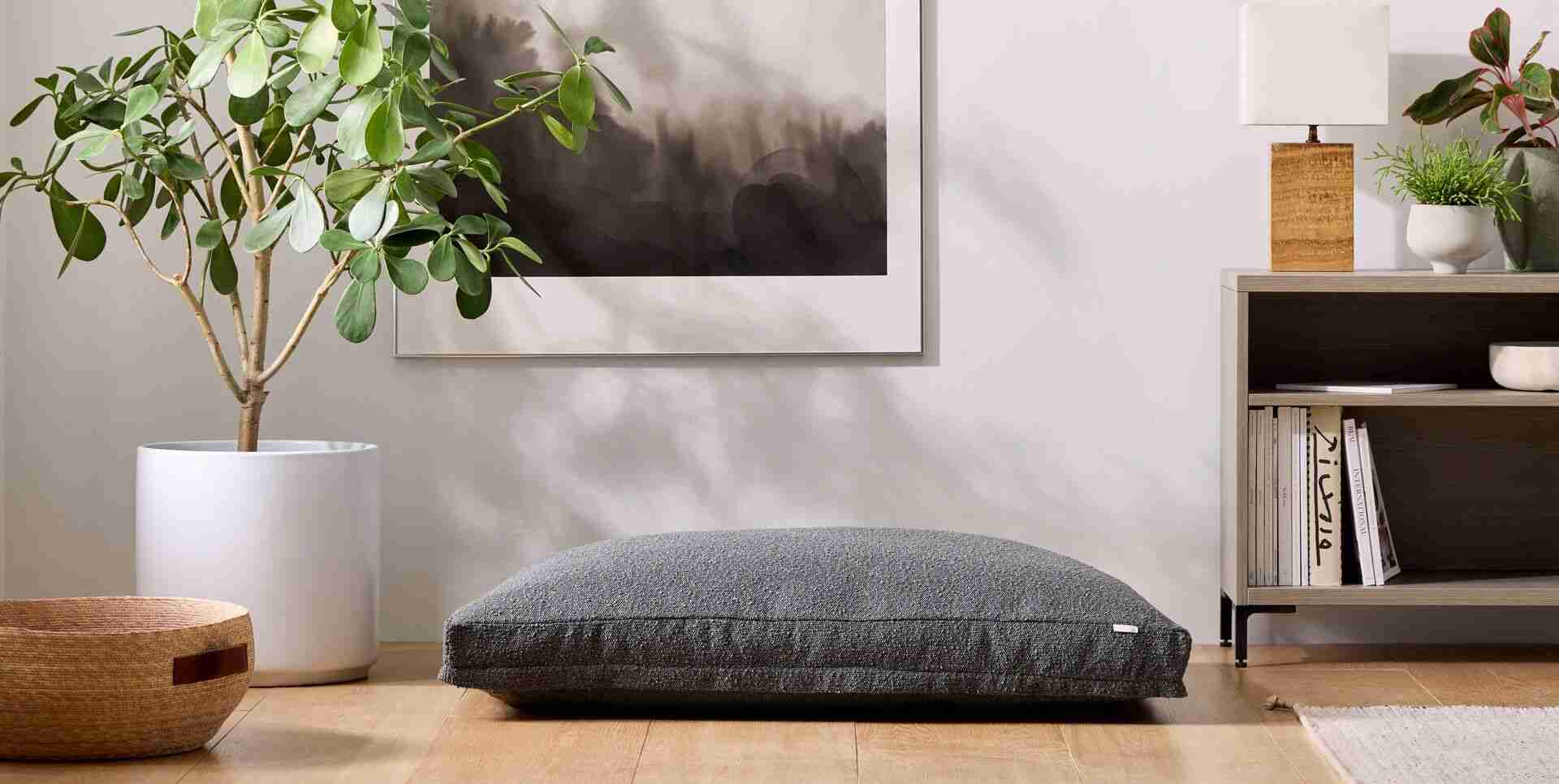
Saatva comfort & luxury, designed just for our furry friends
that features premium materials and a high-performance fabric cover with pet-safe water-repellent barrier protection as well as an ergonomic design that will grant pets of all ages the comfort they deserve.






